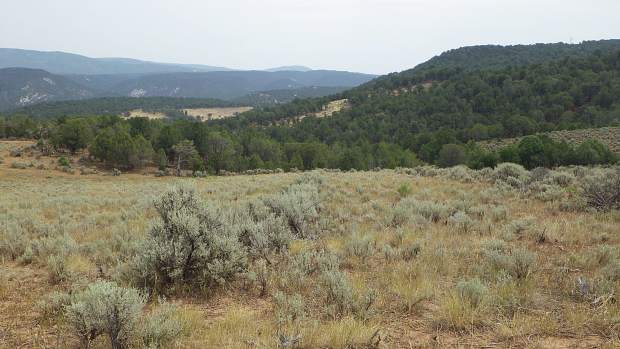BLM Creates Blueprint to Guide Outdoor Recreation in Response to Increased Public-Lands Use


In another outdoor recreation-related announcement, the Bureau of Land Management on Thursday said it is developing a “blueprint” to respond to increasing public-lands visitation and is welcoming feedback on how to implement the ideas it lays out.
The BLM said its new “Blueprint for 21st Century Outdoor Recreation” is intended to guide investments, partnerships, outreach, and program development to respond to current demand and chart a course to meet future needs.
Thursday’s announcement followed another recent solicitation of comments involving outdoor recreation on BLM lands, in which the agency requested feedback on a new public-lands rule it says will “increase access to outdoor recreation by putting conservation on equal footing with other uses.” That proposal received more than 150,000 comments from the public.
Thursday’s announcement said the agency’s new blueprint will aim to advance goals set forth in two other recent documents, the 2022 U.S. Department of the Interior Equity Action Plan and “Connecting with Communities: BLM Recreation Strategy” from 2021. Many of those goals are focused on outreach.
In “Connecting with Communities,” the BLM said while it has always fostered close relationships with community groups, “this strategy takes the next step by reaching out to locally-based government agencies (city, county, tribal, state, and federal) and service provider businesses, emphasizing benefits to communities.” The Connecting with Communities recreation strategy was developed as a result of the Department of the Interior’s 2018-2022 Strategic Plan, which listed the expansion of outdoor recreation and access among its missions.
In the Department of the Interior’s Equity Action Plan, the department said it aims to improve its collection of equity-related data, create heightened awareness of opportunities, improve access to and awareness of Tribal discretionary grant funding, and increase opportunities to access public lands and waters — prioritizing access to recreation areas and services in historically underserved or disadvantaged communities.
In Feb. 2023, an executive order from President Joe Biden established the White House Steering Committee on Equity and required executive departments — like the Department of the Interior, which manages the Bureau of Land Management — to submit equity action plans to the steering committee, which can help direct funding.
While the recreation blueprint identifies potential investment opportunities for those funds, “it is not a budget document and does not imply approval of any specific action or investment,” the BLM pointed out. “All activities and recommendations included in the report are subject to resource constraints and prioritization as part of the annual budget formulation and execution processes, as well as the availability of appropriations provided by Congress.”
The blueprint recommends the agency: grow and diversify resources for BLM recreation; prioritize and embrace partnerships; expand outreach and establish a culture of inclusion; and meet the demand, protect resources, and improve access on BLM lands.
“In fiscal year 2022, the agency recorded more than 81 million visits, representing a 40% increase in use since 2012, with almost a third of that increase occurring since 2020,” the BLM said in the blueprint. “The BLM’s budget for recreation resources management was $60.2 million in FY 2022, or $0.74 per visitor, compared to 2012, which was $0.84 per visitor.”
But amid that rise, “underserved and underrepresented populations remain a small percent of outdoor recreation users on public lands,” the BLM noted in the blueprint. “The bureau believes that all visitors should be able to realize mental, physical, and spiritual benefits from public lands. Crowding, reduced access to amenities, difficulty accessing permits, and fear of negative interactions with law enforcement serve to further exacerbate both real and perceived barriers. The BLM is committed to modernizing the recreation program to acknowledge and overcome these barriers.”
Eagle County contains roughly 250,000 acres of BLM land, part of the more than 8 million acres the agency manages in Colorado.
In identifying some of the examples of what it would like to see continue under the blueprint, the BLM cited a partnership with the Colorado Outdoor Recreation Industry Office, which launched a new communications effort this spring called “Respect. Connect. Protect.” on the bureau’s National Conservation Lands, including the Castle Peak Wilderness Study Area in Eagle County.
The multiyear social-media and internet-based campaign aims to “support enthusiastic, respectful, and safe visits on National Conservation Lands,” the BLM wrote. “The campaign seeks to inspire each visitor to be a better steward of the land: respecting the awesome power of nature, connecting with the splendor of the land, and protecting its beauty along with the natural, cultural and historic resources. Safety messaging is included, as well. Often, National Conservation Lands do not typically have services like cell phone coverage, water stations, or rangers, and the messaging helps visitors be better prepared and informed.”
John LaConte | The Aspen Times | September 3, 2023